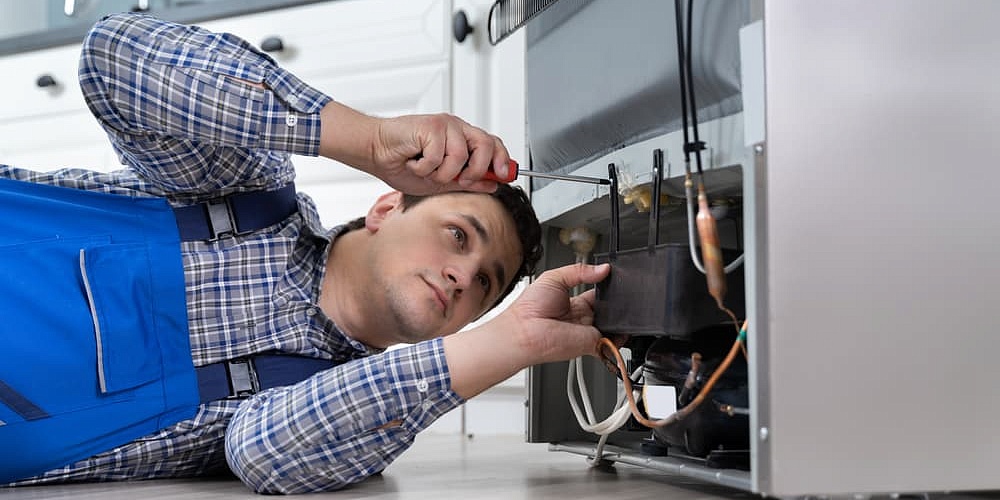10.05.2024
When your refrigerator starts acting up, it can be a significant inconvenience, especially in a busy city like Denver where your day might already be packed. Before you call in a professional, consider some simple DIY repairs that could save you both time and money. Here are straightforward fixes that even novices can handle to keep their fridge running smoothly.
1. Clearing Clogged Condenser Coils
The efficiency of your refrigerator heavily depends on the condenser coils. Over time, these coils can accumulate dust, pet hair, and other debris, especially in urban environments like Denver where air pollution and changing seasons might increase debris around your home. Here's how to clean them:
- Locate the coils: These are typically found either at the back of the refrigerator or beneath it, behind the kickplate.
- Unplug the fridge: Safety first! Ensure the unit is turned off before you start.
- Clean the coils: Using a coil brush or a vacuum with an attachment, gently remove accumulated debris. For coils underneath, you may need to remove the base grille.
2. Replacing Door Seals (Gaskets)
If your refrigerator door doesn't seal properly, cool air will escape, forcing the unit to work harder and use more energy. Inspecting and replacing the door seals can rectify this issue:
- Check the seals: Look for any tears or gaps. Also, test the strength of the seal by closing the door on a dollar bill. If you can pull the bill out easily, your seal might need replacing.
- Clean the seals: Sometimes, simply cleaning the seals with soapy water can improve their functionality.
- Replace if necessary: If cleaning doesn't help, you can purchase a new seal designed for your refrigerator model from a hardware store or online. Follow the manufacturer’s instructions to install it.
3. Fixing a Noisy Fridge
A noisy refrigerator can be disconcerting. In Denver, where fluctuations in temperature can stress your appliance, noises may become more apparent. Common causes include:
- Level the fridge: Ensure your refrigerator is completely level by adjusting the feet at the bottom. An unlevel fridge can cause vibration and noise.
- Inspect the drain pan: Sometimes, the solution is as simple as securing a rattling drain pan.
- Check the fan: If your fridge has a fan, make sure nothing is obstructing it and that it's not loose.
4. Dealing with Frost Build-up
Excessive frost can indicate issues with the defrost system. Before you dive into more complex repairs, try these steps:
- Manually defrost: Turn off your fridge and let the frost melt away. Remember to place towels to absorb water.
- Check the defrost heater and timer: If problems persist, the issue might be with the defrost heater or the defrost timer. These components can often be replaced with basic tools and following online tutorials specific to your fridge model.
5. Adjusting the Temperature Settings
Sometimes the fix is as simple as adjusting the settings. For Denver residents dealing with altitude and seasonal changes, the fridge might need a slightly different setting than the manufacturer’s default:
- Readjust the thermostat: Make minor adjustments to find the optimum temperature (generally 37-40 degrees Fahrenheit for the fridge and 0 degrees Fahrenheit for the freezer).
- Monitor with a thermometer: To accurately assess the temperature inside your fridge, use an appliance thermometer.
Conclusion
Before you spend money on professional repairs, these simple DIY fixes can be an effective way to solve common refrigerator issues you may encounter in Denver. However, if your fridge continues to malfunction despite these efforts, it may be time to call in the professionals. Remember, DIY repairs are about balancing cost-effectiveness with ensuring your appliance functions safely and efficiently.
